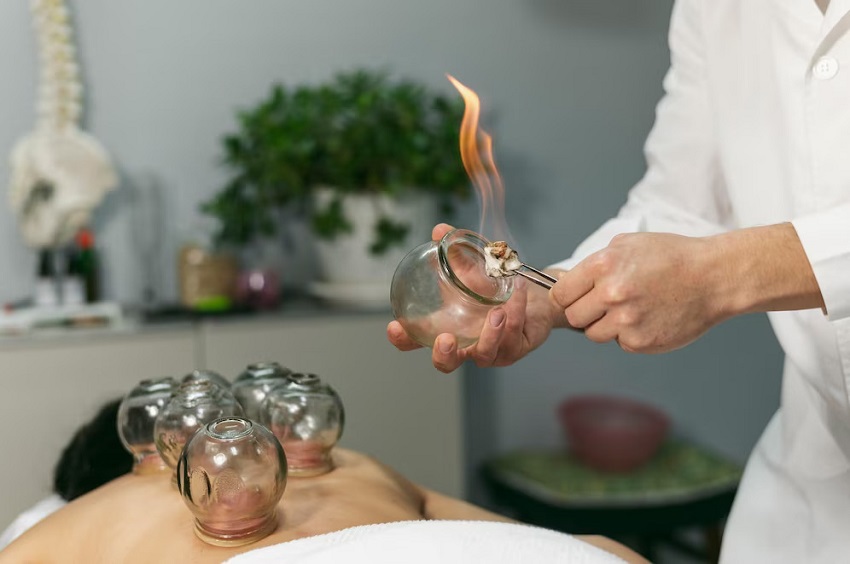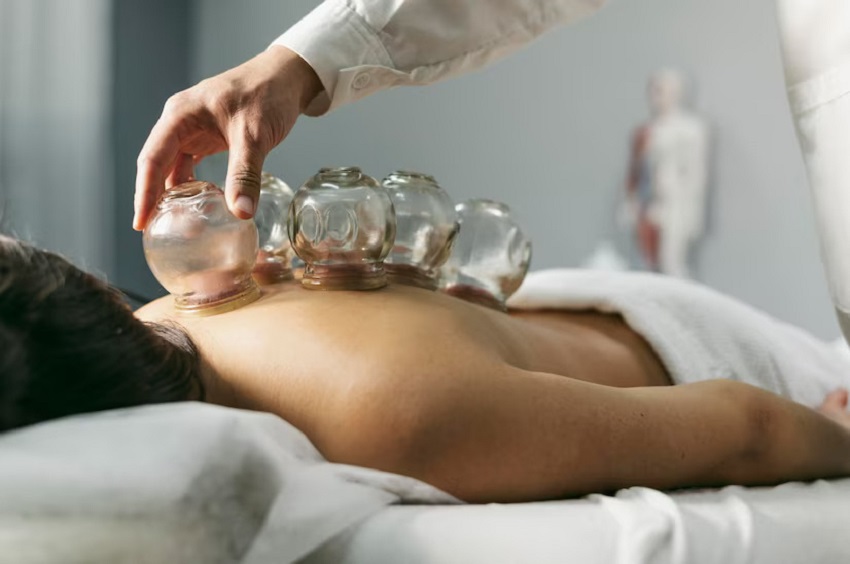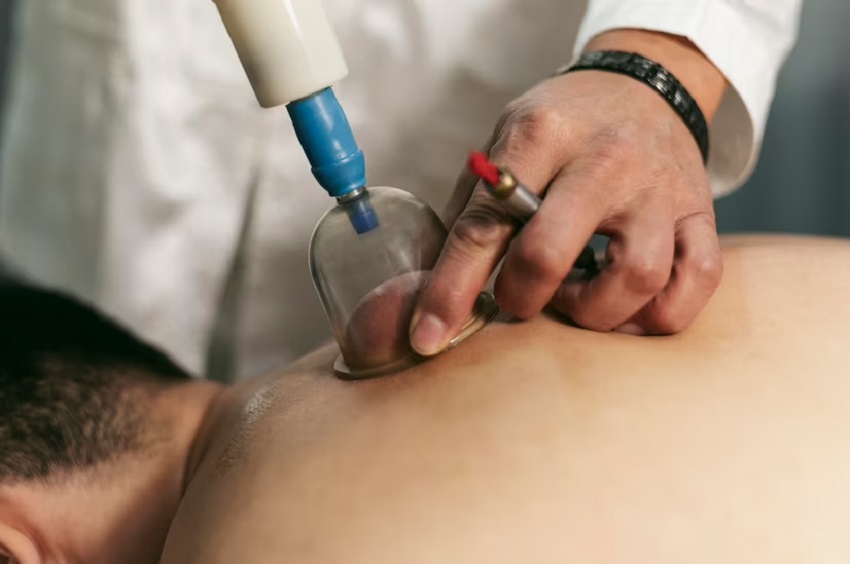Cupping Therapy for Stress: A Holistic Approach

In today’s fast-paced world, stress has become a common companion. Stress can significantly impact our physical and mental well-being from work-related pressure to personal challenges. While various methods exist to alleviate stress, cupping therapy has emerged as a holistic approach that targets both the body and mind. In this article, we will explore the concept of cupping therapy for stress, the science behind it, precautions to consider, and how it can be combined with other stress-relief techniques.
What is Cupping Therapy?
Cupping therapy is an ancient healing practice involving cups on the skin to create suction. The cups can be made of various materials, including glass, silicone, or bamboo. The suction created by the cups helps to increase blood flow to the targeted areas, promote relaxation, and release tension in the muscles. Cupping therapy is deeply rooted in traditional Chinese medicine but has gained popularity worldwide for its potential therapeutic effects.
Types of Cupping Therapy
Different types of cupping therapy techniques address stress and promote well-being. Some common types include:
- Dry Cupping: This involves creating suction using cups without any additional elements.
- Wet Cupping: In this technique, small incisions are made on the skin before applying the cups, allowing for controlled bleeding.
- Fire Cupping: Fire is briefly introduced into the cup to create suction before placing it on the skin.
- Massage Cupping: This technique combines cupping with massage to enhance relaxation and therapeutic benefits.
Benefits of Cupping Therapy for Stress
Cupping therapy offers numerous benefits for stress relief, including:
1. Relaxation and Muscle Tension Relief
Cupping therapy helps relax both the body and mind by releasing muscle tension. The suction created by the cups stimulates blood and energy flow, promoting a sense of calmness and relaxation.
2. Improved Circulation
The increased blood flow from cupping therapy nourishes the tissues and organs, providing them with essential nutrients and oxygen. This improved circulation can help reduce stress-related symptoms, such as headaches or muscle tightness.
3. Detoxification
Cupping therapy can assist in eliminating toxins and waste products from the body. Improving lymphatic drainage, aids in the removal of metabolic waste, allowing the body to function more efficiently and reducing stress on the system.
4. Enhancing Emotional Well-being
Stress often takes a toll on our emotional state. Cupping therapy can help promote a sense of well-being and emotional balance by releasing endorphins, which are natural mood-boosting chemicals in the body.
5. Balancing Energy Flow
In traditional Chinese medicine, cupping therapy is believed to balance energy flow, or Qi, throughout the body. By addressing blockages or imbalances in the energy pathways, cupping therapy aims to restore harmony and alleviate stress.
How Does Cupping Therapy Work for Stress?
Cupping therapy works on multiple levels to combat stress. When the cups are applied to the skin, the suction creates a negative pressure, drawing the skin and underlying tissues upward. This action helps to:
- Release Muscle Tension: The suction applied through cupping therapy helps to stretch and relax the muscles, reducing tension and promoting relaxation.
- Stimulate Blood Flow: The suction increases blood circulation, delivering fresh oxygen and nutrients to the treated areas, which can relieve stress-induced muscle stiffness and pain.
- Activate the Nervous System: Cupping therapy stimulates the sensory nerves in the skin, sending signals to the brain that trigger the release of endorphins and other feel-good chemicals, resulting in a sense of relaxation and well-being.
Scientific Evidence for Cupping Therapy
While cupping therapy has a long history of traditional use, scientific research is increasingly shedding light on its potential benefits. Studies have shown that cupping therapy may positively affect pain management, inflammation reduction, and stress reduction. However, more research is needed to fully understand the mechanisms and benefits of cupping therapy for stress relief.
Precautions and Side Effects
Although cupping therapy is generally considered safe, there are some precautions to keep in mind:
- Consultation: It is advisable to consult a qualified healthcare professional before trying cupping therapy, especially if you have any underlying health conditions or are taking medication.
- Bruising: Temporary circular marks or bruises may appear on the skin after cupping therapy. These marks usually disappear within a few days but can be a consideration if you have an event or occasion coming up.
- Infection Risk: Ensure that the cups and the skin are properly cleaned and sterilized to minimize the risk of infection.
- Skin Sensitivity: People with highly sensitive skin or certain skin conditions should approach cupping therapy cautiously, as it may cause skin irritation.
What to Expect During a Cupping Therapy Session
During a cupping therapy session, you can expect the following:
- Evaluation: The therapist will assess your medical history, discuss your concerns, and determine the most suitable cupping technique for your needs.
- Cup Placement: The therapist will place the cups on specific areas of your body, creating suction. The cups may remain stationary or be moved in a massage-like motion.
- Sensation: You may experience a sensation of tightness, warmth, or mild discomfort during the session. However, the treatment should not be painful.
- Duration: A cupping therapy session typically lasts between 15 to 30 minutes, but it can vary depending on your individual needs.
DIY Cupping Techniques for Stress Relief
If you cannot visit a professional therapist, there are some self-administered cupping techniques you can try at home. However, exercising caution and following proper guidelines is important to ensure safety and effectiveness. Here are a few DIY cupping techniques for stress relief:
- Silicone Cupping Set: Silicone cups are easy to use and gentle on the skin. Apply oil to the skin, squeeze the cup, and place it on the desired area, releasing the pressure to create suction.
- Facial Cupping: Facial cupping involves using smaller cups designed for the face. It can help relax facial muscles, improve circulation, and promote a glowing complexion.
- Static Cupping: Place the cups on areas such as the back, shoulders, or neck, and leave them in one position for a few minutes to create suction and stimulate relaxation.
Combining Cupping Therapy with Other Stress-Relief Techniques
While cupping therapy can be effective, combining it with other stress-relief techniques can enhance its benefits. Here are a few complementary practices to consider:
- Massage Therapy: Combining cupping therapy with massage can provide a deeper level of relaxation and muscle tension release.
- Meditation: Practicing mindfulness meditation alongside cupping therapy can help calm the mind and reduce stress.
- Exercise: Regular physical activity, such as yoga or gentle stretching, can complement cupping therapy by promoting overall well-being and reducing stress.
Frequently Asked Questions
Can cupping therapy help with anxiety and depression?
Cupping therapy may positively impact anxiety and depression by promoting relaxation, improving blood circulation, and releasing endorphins. However, it should not replace professional mental health treatment.
Is cupping therapy painful?
Cupping therapy should not be painful. You may experience mild discomfort or tightness during the session, but it should not be unbearable.
How many cupping therapy sessions are needed to see results?
The number of sessions needed may vary depending on individual circumstances. Some people may experience immediate relief, while others may require multiple sessions to achieve the desired results.
Can cupping therapy be done during pregnancy?
Cupping therapy during pregnancy should only be performed by a qualified professional and with your healthcare provider’s approval. It’s important to prioritize the safety and well-being of the mother and the baby.
Are there any long-term side effects of cupping therapy?
Long-term side effects of cupping therapy are rare. However, it’s important to follow proper hygiene practices and seek guidance from a trained professional to minimize potential risks.
Conclusion
Cupping therapy for stress offers a holistic approach to stress relief, targeting both the physical and emotional aspects of well-being. By promoting relaxation, improving circulation, and releasing tension, cupping therapy can help alleviate stress and enhance the overall quality of life. Whether combined with other stress-relief techniques or practiced independently, cupping therapy provides a unique and natural method to find balance and tranquility amidst the chaos of everyday life.



